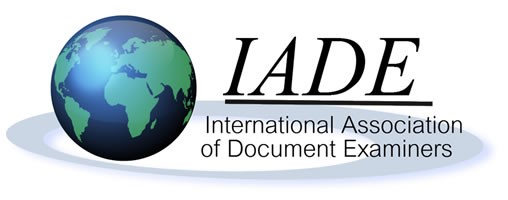Third Annual IADE Seminar / Workshop 2017
September 6–9, 2017 Denver, Colorado
An intimate training experience for novice, student, or seasoned professionals.
Highlights of the seminar's training included:
- Case Study Involving Invisible Ink — Hands on Ink Examination
- Working backwards — Examining signatures with no comparisons
- Familial Handwriting
- Obtaining requested writing for comparison with questioned writing
- Unusual Case Studies from New Zealand
- Use of Measurements: How and When they are Useful for Handwriting Identification
- An Easy Way to Create Court Displays Using Power Point
- Forensic Science Standards and OSAC — a Recent History
- The use of the VSC® and ESDA® and other instruments in Forensic Document Examination
- Making Court exhibits in Microsoft Word
- GIMP, Photoshop, PowerPoint or other packages to manipulate signatures and create exhibits
- Expert Testimony — A Judge's Perspective
Attendees had an opportunity to build relationships, learn, and exchange ideas.
About the Speakers — 2017 Denver, Colorado
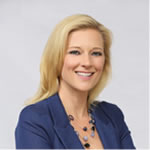 Beth Chrisman, CFDE
Beth Chrisman, CFDE
Beth Chrisman is a Certified Forensic Document Examiner in Los Angeles, CA. She began her career in 2006, and has examined over 1100 document examination cases involving over 20,000 documents. She has trained and mentored students studying to be document examiners. She has testified over 85 times in civil, criminal, and federal trials. Her favorite part of being a document examiner is trial testimony.
Abstract: Case Study Involving Invisible Ink — Hands on Ink Examination and Proficiency Testing
 Beverley East, MGA, CDE, CAM, DPGA
Beverley East, MGA, CDE, CAM, DPGA
Beverley East is a court qualified Forensic Document Examiner who has practiced in the field for over 28 years. She has testified across the globe in the UK, USA and the Caribbean region.
In 2015 she was honored with the “Forerunner Award” by the Institute of Caribbean Studies for her work in forensic document examination. She received the trailblazer Women of Achievement Award from Flori Roberts cosmetic company in 2002.
Her opinion has been requested by the media on landmark cases such as Monica Lewinsky, Jon Benét Ramsey, and the DC Sniper. She contributed to a television documentary by National Geographic on the anthrax letters, “Uncover History – Hunting the Anthrax Killer,” which aired nationally and internationally September 2009.
She is a member of National Association of Document Examiners (NADE), Scientific Association of Forensic Examiner (SAFE). She was appointed to the Ethics Committee of IADE in 2015 and served as the 2015 IADE’s Conference Chair. She authenticated handwriting samples of explorer Alfred Wallace for a client from Troutman Saunders in Washington D.C., which resulted in a $4.5 million award to the client.
Ms. East hosts in-house training for bankers through the Jamaican Institute of Financial Services and accredited seminars for lawyers through the General Legal Counsel. In 2012 she designed and conducted an inaugural 18 month training course for the JCF Questioned Document Division.
Her consultancy provides services to government agencies such as the Independent Commission of Investigations (Indecom); Major Organized Crime and Anti-Corruption Agency (MOCA); the Ministry of National Security, Passport and Immigration Citizenship Agency; and Antigua’s Office of National Drug and Money Laundering Control Policy (ONDCP).
Ms. East is the author of three bestselling books: Finding Mr. Write–A New Slant on Selecting the Perfect Mate; Reaper of Souls – a novel based on the 1957 Kendal train crash; and Bat Mitzvah Girl – Memories of a Jamaican Child. Ebony Magazine listed her as one of six Caribbean Writers to Discover in 2015.
Abstract:
Working backwards — Examining signatures with no comparisons.
Just when you think you know all there is on examination – here I come with the concept of “examining signatures without comparisons.” Yes, you read right! Working backwards is a concept I have developed in the Caribbean when no comparisons are available, which is often in my experience. I don’t think Osbourne would turn in his grave at all; maybe he would give this concept a chuckle. This presentation will demonstrate cases successfully won both in the Supreme Court in Kingston, Jamaica and in family courts in Washington D.C.
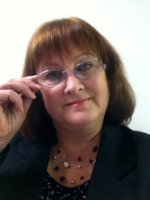 Diana J. Mears, CFDE
Diana J. Mears, CFDE
Diana has been working in the field of document examination since 2012. She is certified through the International Association of Document Examiners, an organization in which she is actively involved.
Currently, she is employed at Forensic Document Examiners, Inc where she has worked on hundreds of cases and has been court qualified.
She enjoys advancing the field by training others using The Document Examination Interactive Training Program developed by Kathie Koppenhaver. Diana has students both here in the states and internationally, preparing them to successfully work in the private and government sectors.
Abstract: Familial Handwriting & Proficiency Testing
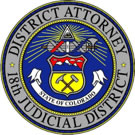 Clay Forington
Clay Forington
Clayton Forington served as a police officer and detective with the Englewood Police Department (Colorado) for 25 years. He is currently an investigator and document examiner for the 18th Judicial District Attorney’s Office in Colorado where he has been employed for 17 years. He has lectured extensively as a survivor of a law enforcement shooting and is a member of the 18th Judicial Critical Response Team, investigating officer involved shootings. He worked on the Columbine High School shooting in Colorado, was assigned to a terrorism task force with the Federal Bureau of Investigation and performed a wide variety of other assignments as a detective and investigator during his law enforcement career.
He attended the United States Secret Service Questioned Document Course at the Federal Law Enforcement Training Center in 1993 and currently conducts document examinations for public agencies within the State of Colorado.
Abstract: Obtaining requested writing for comparison with questioned writing in a Colorado Kidnap.
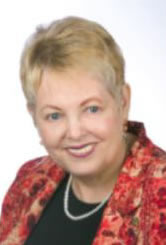 Katherine Koppenhaver, CFDE
Katherine Koppenhaver, CFDE
Kathie Koppenhaver is a Certified Forensic Document Examiner with 34 years’ experience. She has testified as an expert witness over 400 times in court and 130 times in deposition in various courts in the United States and in Sweden, Trinidad, and the Philippines. She has given opinions in over 3300 cases since 1983.
Kathie authored the first college textbook on document examination, Forensic Document Examination, Principles, and Practice, published by Humana Press. She is also the author of Attorney’s Guide to Document Examination. She has written a course on document examination.
Abstract: Changing PDF to Word & Educating attorneys before court
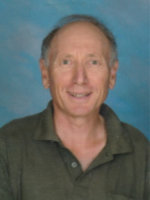 Mike Maran
Mike Maran
Mike Maran has been a Handwriting and Document Examiner for 10 years. He resides in Auckland, New-Zealand. His expertise and services have been utilized by many clients, including corporations, government departments, numerous lawyers and the general public. He has spoken to conferences, service clubs and community groups numerous times about handwriting and document examination. He also has completed cases for clients in Fiji and has given testimony in the Fiji courts, as well as the New-Zealand courts. He is in demand with the New-Zealand media on the specialist subject of handwriting examination and has often appeared on TV, radio, and in local magazines. He has dealt with some unusual and interesting cases and is looking forward to sharing and discussing these cases with the delegates at the IADE conference in Denver 2017.
Abstract: Unusual Case Studies from New-Zealand
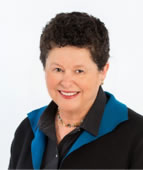 Pat Siegel
Pat Siegel
Patricia Siegel is an executive coach, handwriting analyst, Certified Forensic Document Examiner, and President of The American Society of Professional Graphologists. Pat was formerly a faculty member at The New School of Social Research (New School University), where she co-directed an accredited handwriting analysis and identification program. She has testified in Federal, New York and New Jersey courts and is certified as a Document Examiner by International Association of Document Examiners and Scientific Association of Forensic Examiners. Pat is an Associate Member of The International Association of Document Examiners and she is a Diplomate with the American Board of Forensic Examiners. She received her B.S. from Cornell University and an M.A. from New York University. She also has a Professional Coaching Certification from Zicklin School of Business, Baruch College.
Abstract: Use of Measurements: How and When they are Useful for Handwriting Identification.
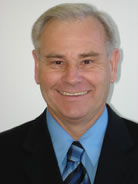 Robert Baier, CFDE
Robert Baier, CFDE
Bob Baier is a full time Forensic Document Examiner (CDE) with 3 different certifications and 3 different Degrees AS, BS, MA. Bob is a certified NY State law enforcement instructor for “General Topics” and trains law enforcement in other states as well in document examination, identity theft, bogus checks, as well as other areas. He has been an instructor at the International School of Forensic Document Examination where he received the 2008 faculty member of the year award.
Bob has rendered an opinion on more than 1,300 cases in more than 26 different states and 3 other countries, and has examined more than 28,000 documents and testified more than 110 times for court, deposition, arbitration, and hearings.
Bob had fun being on live radio nationally and was on the television shows “Inside Edition,” “Law Talk TV” and the Discovery/Smithsonian channel televised in the US, Canada, Europe, and Asia. Mr. Baier has spoken at national and international conferences.
Bob has been a primary instructor for the country of Jamaica (Jamaican Constabulary Force, Document Examination Division).
Abstract: An Easy Way to Create Court Displays Using Power Point — I will demonstrate step by step how to create clear and concise court displays using actual file cases. All the basic tools necessary will be covered:
- Transferring a signature, letter form or numbers onto the PP CD
- Creating text boxes
- Use of arrows and lines with shortcuts to repeat the items
- Changing from portrait to landscape
- Adjusting the size of anything you want to place onto the display
- Use of color - to name a few of the items that will be covered
From the conference video, you will be able to review all or any part of the presentation, pause, go back and move forward any time you want.
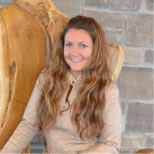 Sharon Nakich, PMP, BA
Sharon Nakich, PMP, BA
Sharon Nakich is a project manager at the National Institute of Standards and Technology (NIST), supporting the Organization of Scientific Area Committees for Forensic Science (OSAC) program. The OSAC is composed of 34 operating units populated by over 568 members and over 250 affiliates. It provides the national infrastructure for identifying, generating, and adopting technically sound forensic science standards and guidelines for the forensic industry. Sharon received her bachelor’s degree from the University of Maryland, College Park, and has more than 15 years of experience in project management.
Abstract: “Forensic Science Standards and OSAC — a Recent History”
Standards development in the forensic science industry was previously executed through Scientific Working Groups (SWGs) that focused on specific forensic science disciplines like questioned documents or firearms analysis. These SWGs published their documents on their websites or through a standard developing organization (SDO), and were funded by various components of the United States Department of Justice. During 2014, funding for many of these SWGs was no longer available and OSAC was developed to further standards development in specific forensic science disciplines. The OSAC is now operational, and has submitted over 25 documents or document concepts to SDOs for the formal development of documentary standards, and is also promoting standards on the OSAC Registry. This briefing will provide details on the status of the OSAC Program, a snapshot of the relevant standards and guidelines in the queue (including from the Forensic Document Examination Subcommittee), and a description of how all stakeholders can participate.
 Jim Lee
Jim Lee
Title: Video Spectral Comparator®(VSC) and Electrostatic Detection Apparatus®(ESDA) and other Forensic Document Instrumentation (ESDA) from Foster + Freeman. — An Update on Their Use in Forensic Document Examination and Related Research (ESDA®, Best Practices and Miscellaneous Relevant Information
Author/Presenter: F. L. “Jim” Lee, Jr., MS, BS; Foster & Freeman, USA and Summit Forensic Document Examination Laboratory
Learning Objective: Forensic Document Examiners will be introduced to and made aware of information pertaining to the VSC and ESDA® and other instruments for the examination of questioned documents.
Abstract: This presentation is intended to provide to the attendee(s), with an update to some of the relevant information pertaining to the use of the VSC® and ESDA® and other instruments that can be used in Forensic Document Examination for the examination of questioned documents aided by the use of Infrared, Ultraviolet and transmitted illumination aided examinations in the VSC® and indented writings and indentations on paper, aided by the ESDA® and also Laser aided examinations such as those used in RAMAN Spectroscopy and Elemental Composition Comparison. It will include a discussion of research that has been conducted in recent times, regarding the ESDA® and its use. While specifically addressing the Foster + Freeman VSC® and ESDA® in this presentation, the presentation will also, address the topic of best practices associated with the use of the ESDA® and other types of Electrostatic Detection Devices (EDD). Attendees to this presentation are encouraged to share any ESDA®/EDD tips that they have discovered in their practice and to share accounts of any interesting or unusual cases that they have encountered where use of the ESDA® or another model of EDD has played a significant or unique role in the discovery of evidence in the case. Additionally, attendees are encouraged to bring their concerns and questions about the use of the ESDA® as well as any questioned document cases with them to the presentation for discussion as time constraints and client confidentiality agreements may allow.
Jim Lee has 34 years’ experience as an examiner of questioned documents with the U.S. Army Criminal Investigation Laboratory (USACIL), State of Florida Lottery and in private-practice.
He earned his Bachelor of Science (Honors) and Master of Science degrees from Troy State University, Troy, Alabama. He received his training in questioned document examination at USACIL from 1982 to 1984 and retired in 1992 after serving as the Division Chief of the Questioned Document Division, USACIL, Camp Zama, Japan. His rank at retirement was Chief Warrant Officer-4, culminating a career of more than twenty years as a Special Agent with the US Army Criminal Investigation Division Command. He then served ten years at the State of Florida Lottery as a Senior Special Agent and Forensic Document Examiner and Chief of Facilities Security, prior to his retirement in 2002. In 2003, after serving as the Director in the Forensic Services Unit of West Valley Police Department, West Valley City, Utah, he joined the Foster & Freeman USA team as a Technical Sales Applications Engineer. He has also established his own private practice in forensic document examination, Summit Forensic Document Examination Laboratory of Liberty, UT. During this time, he has also successfully completed courses conducted by the U.S. Secret Service, the F.B.I., U.S. Public Safety Institute and Rochester Institute of Technology (R.I.T.) in subjects as diverse as typewriter identification, printing techniques for questioned document examiners and process color for flexography. These qualifications, together with the aforementioned practical experience, have led to him being qualified in the examination of all forms of questioned document examination and comparison, while specializing in handwriting comparative examination.
He is board certified by, and a Diplomate of the American Board of Forensic Document Examiners (ABFDE and a past Director of ABFDE, a Life Member and Secretary of the American Society of Questioned Document Examiners (ASQDE), a-member of the American Academy of Forensic Sciences (AAFS), a past-member of ASTM International, originally known as the American Society for Testing and Materials (ASTM), a member of the Utah Division of the International Association for Identification (IAI) and its parent body the International Association for Identification, a member of the Midwestern Association of Forensic Scientists (MAFS), a Charter Member of the Japan Division of the IAI, and past-President and Charter Member of the Southeastern Association of Forensic Scientists (SAFDE)and has served as a member of the Scientific Working Group Documents (SWGDOC). He has kept current in the field of forensic document examination by attending and participating in numerous professional meetings and workshops pertaining to the discipline of forensic document examination over the past 35 years.
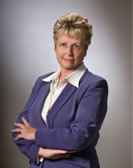 Kathy Carlson
Kathy Carlson
Kathy Carlson, is a Certified Forensic Document Examiner in Montrose Colorado, who started her education in 2009. She attended a two-year mentorship program and has diligently continued her education by attending yearly conferences put on by numerous reputable organizations and monthly continuing education (CE) classes. She has handled over 360 cases, analyzing 1000's of documents, handled cases in many different states and abroad. She has traveled to Turks & Caicos to bring justice to a fraudulent case, where her client prevailed.
Kathy is Vice President and Education Chair of IADE. She has put together continued CE classes via Zoom, an online interaction application to help others to further their education. It is vital in this ever-changing world of technology to stay abreast in our field of new technologies. These classes assist other document examiners in their education to stay ahead of ways fraud has grown. Not only is it a great educational tool, it also provides document examiners a way of communicating how others in our field handle difficult or interesting cases. They also enable other members to use up to date technology to present their cases.
She is President of Forensic Research on Elderly Exploitation, a non-profit organization, and is in the process of engaging in a research project that involves working with nursing homes, obtaining signatures from patients with Alzheimer's and Parkinson's diseases before and after medications are administered. This project plans to track and correlate the differences between signatures and differences between the different neurological disorders.
Abstract: Making Court exhibits in Microsoft Word
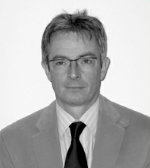 David Madden
David Madden
Document Examination Ireland is run by Dave Madden BSc. (Hons), DIS, CSG. CDE Dave has been trained as both a Graphologist and a Document Examiner.
He holds a Diploma in Forensic Graphology from the Cambridge School of Graphology and a Certificate in Questioned Handwriting and Document Examination. He also holds a Bachelor of Science degree from Loughborough University of Technology and a Diploma in Industrial Studies.
Dave founded Document Examination Ireland in 2012 and offers services to the legal community, companies and private individuals. Dave has worked on over 300 questioned document cases and has submitted over 75 expert witness reports to numerous courts, tribunals and committees in Ireland. He has given evidence in the Irish High Court, Circuit Court and Employment Appeals Tribunals.
He is a member of the UK Chartered Society of Forensic Sciences and the Scientific Association of Forensic Examiners (SAFE). Dave completed expert witness training relevant to the Irish legal system in 2013. He participated in the Irish Law Reform Commission Round Table on Expert Evidence in 2016.
Abstract: NEGA & FDM (Fibonacci Digital Modeller) — MacWinLin CPS
This presentation will be useful for anyone who currently uses GIMP, Photoshop, PowerPoint or other packages to manipulate signatures and create exhibits. NEGA doesn’t have all the functionality of those packages but for certain common DE work I have found it to be a real time saver. I will give a demo of the software using some recent cases where the tool has proved useful.
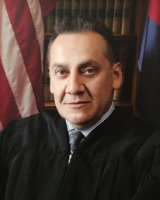 Michael A. Martinez - 2nd Judicial District Court Chief Judge
Michael A. Martinez - 2nd Judicial District Court Chief Judge
Chief Judge Martinez was appointed to the District Court, Second Judicial District (Denver) by Governor Bill Owens in September of 2000. He has worked in all divisions of the Court, including civil, criminal, and domestic relations. He was appointed Chief Judge of the 2nd Judicial District on Sept. 23, 2013.
Prior to his appointment to the Denver District Court, Chief Judge Martinez served as a Magistrate in the 17th Judicial District (Adams and Broomfield Counties) and in the Denver County Court. In his legal career, he worked as a trial lawyer in both the public and private sectors, holding positions with the Denver City Attorney's Office, the Regional Transportation District and in private practice.
Chief Judge Martinez received his B.A. from the University of Colorado, and his J.D. from the University of Denver College of Law. He is also active in the community, having served on numerous boards, committees, and commissions, including: Rose Community Foundation, Colorado Child Support Commission (Chair), Colorado Hispanic Bar Association, Supreme Court Magistrate Rules Committee, State Board of Education Advisory Committee for Gifted and Talented Education, State Personnel Review Board, Denver Public Schools Special Education Advisory Committee, and the Executive Committee of the District Judges Association.
Chief Judge Martinez is dedicated to the improvement of trial advocacy skills and is a long-time faculty member with the National Institute for Trial Advocacy. He has taught advocacy programs for NITA, the ABA, law firms and pro bono/governmental entities.
Abstract: "Expert Testimony — A Judge's Perspective"
